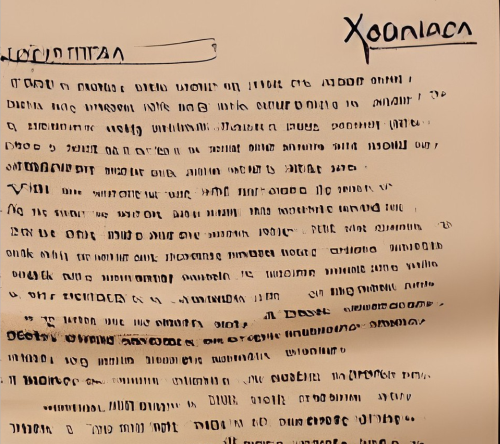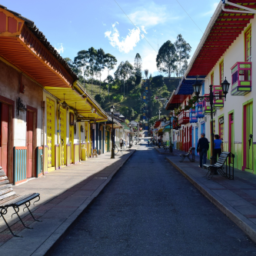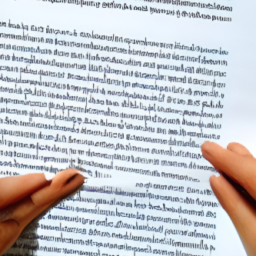
When attempting to learn a new language, there are many factors to consider. These factors include cultural distance, differences in concepts, and access to high-quality primary materials. It is also important to consider the linguistic background of the individual who wishes to learn the language.
In order to learn a new language, it is necessary to have a variety of resources available.
Contents
Xhosa is an “agglutinative” language
Xhosa is a Bantu language that is “agglutinative,” meaning it glues together its word stems and affixes to form new words. As a result, the resulting words can be very long. The language is also agglutinative, with 15 classes of nouns, similar to the gender system of European languages. The classes serve to change the meaning of nouns and modify verbs and adjectives.
The Xhosa alphabet has two distinct phonetic systems: the lateral alveolar click (made with the side of the tongue against the side teeth), and the post-alveolar click (made with the tip of the tongue against the roof of the mouth). These two phonological systems are similar to the English and Afrikaans writing systems, but the Xhosa writing system has several unique features.
In Xhosa, the noun plays a special role, which is similar to how it is in Latin alphabets. Noun roots are capitalized, and they form the basis for social bonds among Xhosas. In addition to this, visual cues are sometimes used to capitalize nouns, and the accent is often placed on the penultimate vowel, which doesn’t require capitalisation.
Xhosa is a Bantu language, which is related to Swati and Ndebele. Although Xhosa and Swati are mutually intelligible, they are classified as separate languages for cultural and political reasons.
Xhosa has two tones
Xhosa is a tonal language, one of many African languages that uses click consonants. There are 18 clicks in Xhosa, and each one is articulated at three different places. In addition, this language is considered “agglutinative”, meaning that there are tons of prefixes and suffixes.
Xhosa is spoken by around 8 million people in South Africa. Nelson Mandela was a native speaker of this language. Its vowels are distinct and its tones are important in the pronunciation of the words. Tones in the language can drastically change the meaning of a word.
Xhosa is one of the most difficult languages to learn because of its complex structure. It is spoken by 8 million people in South Africa and by 11 million people throughout Africa. Most of its speakers live in the Eastern Cape, Western Cape, Gauteng, and Northern Cape. It is one of the eleven official languages of South Africa. Xhosa is taught in primary and secondary schools up to the tenth grade, although English is the primary language of instruction.
Xhosa is agglutinative language, meaning that there are prefixes and suffixes attached to root words. Like English, Xhosa has gender-specific nouns. The parts of speech modifying a noun must agree with its gender. This agreement typically occurs in words that are related to the original class. Xhosa also has a subject-verb-object structure, just like in English.
Xhosa is a tonal language
Xhosa is a tonal language with a sound system and 17 vowel phonemes. Vowels are pronounced with a simultaneous closure of the glottis to increase the pressure of air in the mouth. Xhosa has an extremely complex system of consonants. Its vowels are long and short, and most syllables end with a vowel. Vowel length is an important factor in word meaning in Xhosa, but vowel length is not represented in writing.
Xhosa has two types of clicks: post-alveolar click and lateral alveolar click. The lateral alveolar click is produced by striking the back of the side teeth with the tongue, while the post-alveolar click is made by striking the roof of the mouth with the tip of the tongue. These sounds are similar to English’s “click” sound, although they differ in their sounds.
Xhosa has many consonants, and many of these sounds have different sounds. Some are aggressive, while others are calming and soothing. The first 15 clicks in Xhosa are called ‘dental clicks’, while the last ones are called ‘post-alveolar clicks’.
Xhosa is a tonal language and is spoken by approximately eight million people in South Africa. The language is similar to the Zulu language, but is very different. Xhosa’s tonal system helps differentiate between words that otherwise sound the same. It is a unique language that sounds beautiful when spoken.



Xhosa has gendered nouns
Xhosa is a language of South Africa that has gendered nouns. It is a phonetic language, which means that the letters in a noun correspond to the sounds that the words make. Despite this, there are some challenges associated with learning Xhosa.
Xhosa has fifteen distinct noun classes. Nouns beginning with a specific letter will be pluralized depending on their class. For example, ‘dog’ is ‘in ja’ in English, but ‘izin ja’ is the plural form.
Xhosa is a semi-monose language with a simple vowel system and some uncommon consonants. It has three basic clicks: a dental click (with the tongue on the back of the teeth, similar to the English “tut-tut”), a lateral alveolar click (with the body of the tongue on the roof of the mouth), and a nasalized click.
The Xhosa language is a member of the Bantoid language family, which includes Zulu and Swati. It is related to many other languages, but is distinct from them for political and cultural reasons. In South Africa, Xhosa is the main language of the Eastern Cape, Western Transvaal, and KwaZulu-Natal.
The language also has gendered verbs. A verb ending in -mp is a feminine verb. Another gendered verb is supyire.
Xhosa is a tonal language with two tones
There are many African languages that use click consonants, and Xhosa is one of them. Xhosa has 18 distinct clicks that are articulated in three places. In addition, Xhosa is a tonal language, and there are fifteen different noun cases. The language also has tons of prefixes and suffixes.
Xhosa is a language spoken by approximately 8 million people in South Africa. It is a dialect of Afrikaans and is related to Zulu. There are several dialects of the language, and each has its own distinct sound. Xhosa has a large variety of consonants, including two tones that are called clicks.
The consonants in Xhosa are pronounced with simultaneous closure of the glottis and raising of air pressure in the mouth. Unlike English and Khoisan languages, Xhosa has only two tones. In addition to the two tones, Xhosa also has ejectives.
Xhosa is a Bantu language, and it is related to Zulu and Swati. Although they are mutually intelligible, Xhosa and Swati are considered separate languages because of their cultural and political differences.
The idiomatic expressions in Xhosa are closely connected to the environment. One such example is isanama ndokunamathela (isanama sticks to you) which means “bad things will stick to you.” This is a warning against bad habits and people. Another idiom is uzicandele umgalagala, which means consequences of your actions.
Xhosa is a tonal language with four tones
Xhosa is a tonally differentiated language with two phonemic tones and two consonant tones. While its written language rarely marks tones, it uses the a, aa, and aaa to indicate tones. Xhosa also has long vowels, which are not written and are phonemic, such as aa. The a and aa are the result of a gemination of two vowels, resulting in two long vowels with contour tones.
Xhosa is the official language of South Africa and Zimbabwe. There are approximately 19 million native speakers. Xhosa is similar to Zulu, but the two languages are largely unrelated. Xhosa has a heavy functional load of click consonants and is mutually intelligible with Northern Ndebele and other Nguni languages.
The main difference between these two languages is the way they deal with accent. In tonal languages, the accent occurs at all levels of phonological representation, whereas in metrical languages, the accent occurs at a single location in the word. In tonal languages, the accent is realized phonetically through increased intensity, duration, and pitch.
Xhosa has 18 consonants: six of which are clicks. Clicks occur in the back of the mouth where two points of contact are located. The tongue concavely pulls down to create the sound. The tongue then releases forward closure, producing a pop-like sound. In Xhosa, there are five articulation points for click consonants, and a symbol representing each. Some click consonants are nasalized.















